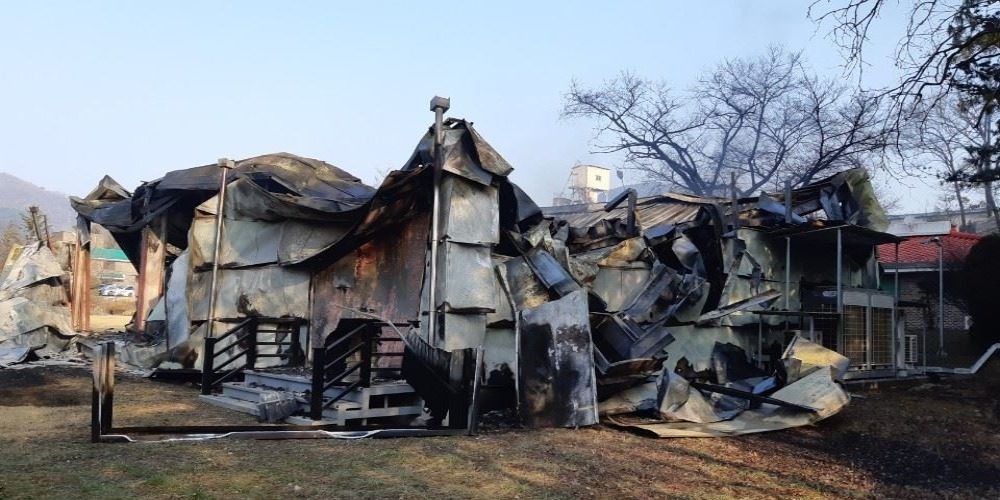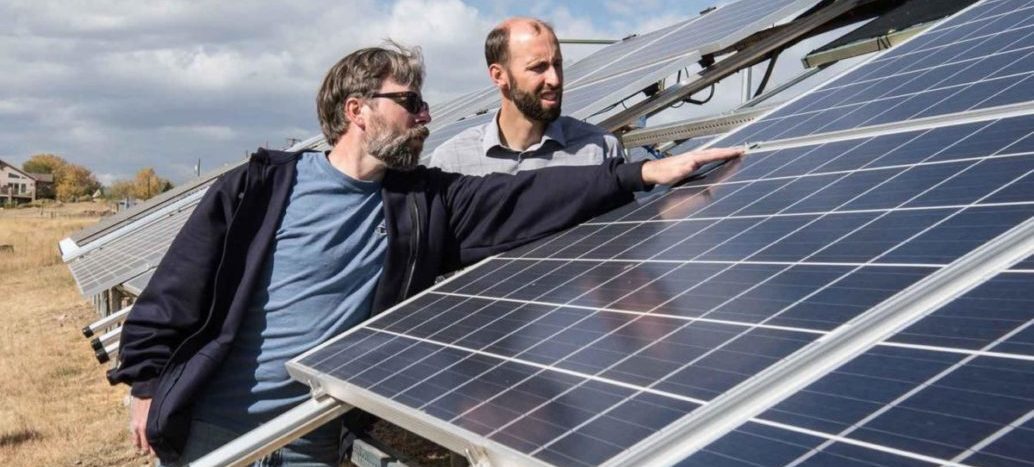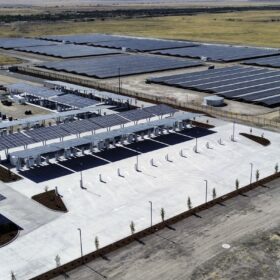Sandra D. Kennedy, commissioner on the Arizona Corporation Commission (ACC), has submitted a letter to the ACC (pdf) suggesting that in light of the two energy storage fires that have occurred in Arizona (2012 and 2019), lithium ion batteries – specifically those that will release hydrogen fluoride – “are not prudent and create unacceptable risks”.
The letter, dated August 2, noted that in the 2012 fire at Arizona Public Service’s (APS) Elden Substation a battery cell was overcharged due to a failure of the energy storage management system. Additionally, inadequate electric circuit protection, and temperature sensor issues were found. The report states that the facility was initially doused with water to put out the flames, which – per the document – can make lithium ion batteries extremely volatile.
Yesterday, August 7, APS released an update (pdf) on the 2019 McMicken Energy Storage Facility fire of April 9, around 5 PM. The utility has completed of phase one of the investigation, and has begun the second phase. 377 of 378 battery modules were “safely” removed from the the installation, with one module unable to be discharged. Phase two has seen hardware believed to have failed sent to a lab in Scottsdale, Ariz to be x-rayed and further taken apart for analysis. Afterwards, they’ll be sent to experts in Michigan.

Image: Arizona Public Service
South Korea, which due to strong incentives supporting local manufacturers is one of the world’s leading lithium ion battery markets, has had 23 individual energy storage facility fires out of almost 1,500 systems installed since August of 2017.
On June 11, 2019, a report was released on these fires suggesting four factors: a lack of proper ground from electrical shocks; insufficient management of the operation environment (ocean side installations caused humidity damage); bad contractor installation; and a lack of integrated control and protection systems.
And while battery cell defects were found, testing of the units didn’t result in fires, and the cells – the issue highlighted by the Commissioner – weren’t considered the root cause. Instead all issues were related to the energy storage management systems and contractor installation.
Other Technologies
The letter from the Commissioner went on to highlight other energy storage technologies.
- Liquid flow batteries “that are easy to scale up linearly in terms of capacity”
- Liquid metal batteries with electrodes made of sodium and nickel chloride
- Zinc air batteries with no expensive components
- Nickel-Iron battery that are “almost immortal”, environmentally benign, and able to take aggressive use
- Magnesium batteries that are non toxic and very abundant
This content is protected by copyright and may not be reused. If you want to cooperate with us and would like to reuse some of our content, please contact: editors@pv-magazine.com.








Gee wiz, we’re inventing the wheel once again , Apple laptops started the lithium ion fire syndrome way back, it took them 5 years of research to developement on safely charge and discharge of said technology management , now they assured the public rightfilly LiOn batteries are %100 safer , not just apple that garbled to save its technological reputation many other hardware manufacturers tightened the charging management and succeeded. The regulatory suggested detail offering other options in fact sited that the fires that occured were mainly of human error nature, result of which any technology would have equally flawed
if not even worse. Banning LiOn batteries is like banning using automobiles when at they first spread were famous for sudden explosions , apt and exact science technology restored the confidence of riding a car is safe.
morons who point to the simple science of laboratory safety… you can have my international tickets… you think that *everyone* manufacturing safe batteries is doing so because they can… yes Apple and anyone with a brand they care about… but what about that awesome garage built eBike your neighbor is building… wonder where he is getting those batteries?
Let me tell you about MANY planes that have come close to being taken out of the sky… because someone ‘noticed’ or “caught” a problem with labeling of an international mail piece going on to a passenger airplane? NO… because it burst into uncontrollable flames prior to being placed on the plane!
1) ALL international packages shipped via the USPS (and most other world posts) go into the belly of *passenger* airlines as cargo
2) advent of giant cordless tools {chainsaws, lawn mowers, cutoff saws, etc} means that folks are trying to mail this stuff all over the world…
3) more large battery pack demand? More “knock off” producers of replacement batteries who don’t even put a name on their products
4) it doesn’t take a very large lithium ion battery (for a tool, vehicle, lawn/garden gadget) to overcome the fire suppression system of an airplane… these things fail BIG if they fail… and when there’s aluminum around… can you say thermite?
5) you say *why doesn’t USPS just look inside the package to see if there’s a problem?* xray or inspect! ? LAWS. USPS Is prohibited from inspection including xray… must rely on honesty of the shipper (takes 2 minutes to find a Chinese shipper willing to send giant cordless tool batteries this way using “e-packet”… might take slightly longer to find one shipping out.. only due to market forces)
6) its evidence you want? FEDEX crash last year (a cargo plane luckily) lithium ion… cargo fires in sorting facilities on port authority grounds… plenty of leaked videos… recently from British Airways… many incidents out there… not consciously covered up by a conspiracy… no… just short sighted, panic driven self preservation… no one knows how to deal with it… everyone in shipping is liable… let alone the mom and pop electronic motorcycle, scooter, battery refurbishing crowd. the problem is NOT Apple laptops… it’s unnamed eBike batteries… knock off products meeting huge demand… taking advantage of oversights in how we ship things that could kill our family members on the way to our vacation!
6) lest I forget… there are maybe 5-6 airlines in the world who check (xray) all packages prior to putting them on a plane… the rest ship it first (unchecked) to their hub… an 8 hour flight away? and *then* they usually /mostly xray all cargo.
this story about the unintended and hidden problems with lithium ion batteries… I really don’t think you are looking in the right place for the shock and terror… just think about your next family vacation to someplace far away… flying through an international hub outside the US enroute to… oh never mind… there was an uncontrollable fire in the cargo hold… you never made it there.
Interesting…but if these batteries were that dangerous – with all the shipping going on – and there are so few, to any actual incidents, probably means the units are quite safe
Well, we just have to quit anything that helps to transition from fossil fuels. Here, we have 2 EV fires. Just two, in an entire state. Now, for some perspective…
“Each year, from 2014 to 2016, an estimated 171,500 highway vehicle fires occurred in the United States…” (with really bad news to follow). From this search in google “car fire statistics us” and the info from, fema gov, a US agency. Now, if there are only 50 states, then the average should be over 3,000, not just 2. Granted, there were “just” 208,000 EV registered in 2018 (more than double from previous year). and there’s over 1,000x that in gas cars. So, looks about even!
As electrics improve and gas keeps on contributing to extra CO2 (a proven GHG), it’s interesting (to say the least) how the media is negatively biased for the far cleaner and more efficient EV technology. For example, why do we not ever hear about the gas car fires?
Unacceptable risk to their generation profit center more like it.
@John Weaver; since you have experience as a solar developer, do you think the energy density of redox flow batteries is the reason lithium ion batteries have been adopted? It seems like Redox flow batteries can be containerized like the cargo containers used for the lithium ion energy storage systems. When the latest/greatest technology comes along from ions, to electrolytes, to new membrane technologies, one could change the energy storage unit in real time under CIP, instead of changing out energy storage units every, 10 years? I understand that some energy storage should be small and dense to fit into a local switching station. But some of these solar PV and wind projects have hundreds to thousands of acres, with room for large redox flow storage facilities. Have you personally done a project that uses the Lithium titanate storage battery?
The two incidences in Arizona had one system built by AES in 2012 in Flagstaff and the other in Surprise was by Fluence which is now owned by AES and Seimans. Both systems were using Samsung SDI batteries. Was it ever revealed if these energy storage systems in South Korea were a product of AES or Fluence? Were the batteries used manufactured by Samsung?
I think lithium ion has a leg up because it’s been in laptops, then phones and now cars. It’s supply chain is tested and believed in already.
8minute solar energy CEO described non lithium solutions as science experiments still for large solar projects.
Replacing lithium-ion with lithium iron phosphate (LiFePO4) solves both the over charging leading to fire and the water reactivity problem. It is a much safer technology for residential PV and Automotive EV applications.
As shown in the article http://bit.ly/2FQp0om , the current li-ion technology is unsafe!